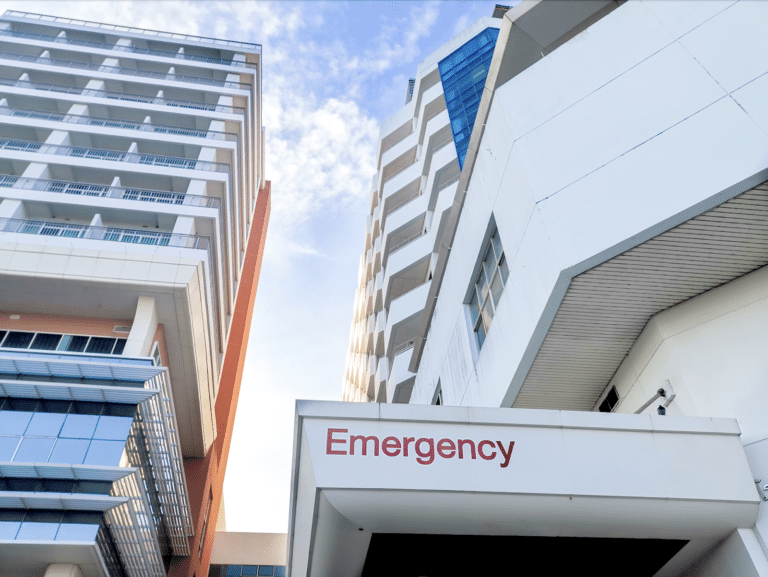Healthcare-associated infections (HAIs) are infections or contagious diseases acquired within healthcare facilities and are a severe threat to healthcare facilities. As a result, one of the main goals in hospitals is to limit infections by protecting patients (and staff) from contagions.
Although there are a number of protocols in place to protect doctors, nurses, patients, healthcare construction poses a significant threat to HAI prevention.
Fortunately, there’s a solution—and we’ll discuss more about it down below.
Understanding HAIs

As noted above, HAIs are infections that patients and staff catch and, thus, have the ability to spread throughout a hospital.
The most common vector of HAIs is hand hygiene. Because we use our hands for almost everything, they harbor infectious bacteria or viruses until they are cleansed.
Therefore, almost everyone in a hospital—whether it’s a patient, doctor, nurse, or guest—has the ability to catch and spread HAIs.
How to Prevent HAIs

Within healthcare facilities, the prevalence of HAI threats has led to several protocols that keep areas and medical equipment sterile.
One of the most recognizable protocols is an anteroom, where medical staff wash their hands and arms and are then helped into a surgical coat, mask, and finally sterile gloves before they enter an operating room.
Other protocols in healthcare facilities include the use of hand sanitizer before entering patient rooms, vast HVAC systems with high-powered air filtration systems, and security measures that keep guests away from sensitive areas.
The Dangers of Construction Healthcare Facilities as it Relates to HAIs
Because the healthcare industry is constantly growing, they need to find ways to operate during the construction process while also reducing the risk of HAIs.
When performing renovation and construction activities in an active healthcare facility, a number of things can spread HAI. For instance:
Any invasive construction can cause the creation of dust and debris to spread throughout the air and have a negative impact on the patient population.
Likewise, construction workers coming in and out of the facility may not be taking the same precautions as hospital staff and, therefore, bring other pathogens into the hospital.
Unfortunately, there are a lot of ways hospital construction can spread HAIs. But one solution is creating sterile temporary barriers—ones that separate construction activity from patients and staff and work to contain dust and debris.
Prevent HAIs by Using Modern Modular Wall Systems from SwiftWall®
Temporary wall systems are a common tactic in modern construction to contain dust and debris so that it cannot enter unwanted areas.
Traditionally, temporary walls were constructed of studs and drywall. While effective at containing dust, they required the time and effort to construct before the actual construction began—and most of them were thrown away afterward.
Modern wall systems, on the other hand, are designed to be lightweight, modular, and reusable—and offer the same benefits of the traditional walls.
Swiftwall®’s Temporary Wall For HAI Prevention
SwiftWall offers the most effective temporary wall solution designed to provide medical-grade containment during construction and keep patients and staff safe.
The SwiftWall Flex temporary wall system is manufactured with non-hygroscopic materials that do not absorb or retain moisture, and it offers the capability of airtight seals for negative airflow.
These characteristics meet up to ICRA Class V requirements, an extremely important consideration when performing construction in a healthcare facility. Due to its lightweight yet durable nature, the wall system installs 5x faster than traditional temporary walls and is reusable, which is a powerful tool for healthcare facility managers to use whenever sterile separation is required.
Maintain HAI Prevention Protocols During Healthcare Facility Construction with SwiftWall®

SwiftWall® is proud to provide modern temporary wall systems that are stronger and easier to install. They’re also proud that they’re temporary wall solutions can be used to meet the stringent standards of HAI prevention in healthcare facilities.
To learn more about SwiftWall® Flex and how SwiftWall® temporary wall systems can be used to achieve expansion and renovation activity while keeping patients and staff safe, reach out to our experts today!


